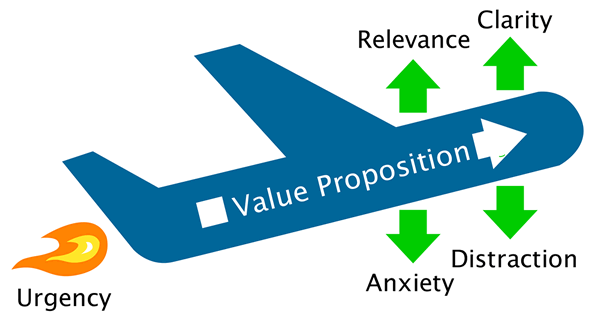Designing for findability, usability, and brand reinforcement are basic requirements of web experience design. But the purpose of a website is not just to be found and admired. It’s to generate leads, sales, and revenue.
By using a conversion rate optimization process that tests UX and persuasion hypotheses, you can create pages that are proven to generate more revenue. Results like that get positive attention from upper management and the C-suite.
Let’s look at an example of how this works.
Conversion Rate Optimization for PlanetAmex.com
When PlanetAmex.com, an exclusive business-class travel booking service, needed to improve their sales from their paid search landing pages, they knew the standard experience redesign process wouldn’t be enough. They needed to be sure that a new landing page design would deliver more sales, not just look better or have a pleasant user experience.
The home page of PlanetAmex.com receives thousands of visitors per month and 91% of them are new. The site attracts a high quality audience: people in the top 2% of households who are looking for first class and business class flights.
A high bounce rate on their old landing page was hurting sales
Their visitors weren’t spending enough time on the site to make a favorable impression, let alone an immediate purchase. Even though their traffic was high quality, their bounce rate was very high.
Something about the landing page experience was repelling many of the visitors and their opportunity to sell to these potential customers evaporated with every bounce.
What would they need to do to persuade a greater percentage of people to stay, click, and get a quote or call to book right away?
Ask any dozen UX professionals, web designers, or marketers what should be improved on this page, and you’ll get a dozen (or more) opinions. But the business owners couldn’t take the risk of just putting up a new page based on opinions. They needed to know for sure that they would get better results with their new page.
The Solution: Conversion Optimization
The only way to know for sure is to run statistically valid tests of new user experiences, design, and copywriting variations. By running controlled A/B split tests on the live site, company management can get real data from live visitors and know with certainty which page variation would maximize sales.
The most simplified version of the conversion optimization process shows three steps:
Step 1 – Analyze
There are a number of frameworks you could use to guide you in analyzing a landing page experience. WiderFunnel provides a popular framework for conversion rate optimization called the LIFT Model™ (which stands for “Landing page Influence Function for Tests”), shown below.
You can use this as a guide for analyzing page experiences from the perspective of the visitor.
Step 2 – Hypothesize
The UX and persuasion problems you’ll identify using a framework like the LIFT Model can be flipped into hypotheses, which can then be tested.
For example, if you believe there’s a clarity problem with the copywriting hiding the main benefits of the service within blocks of copy, a hypothesis could say: “Adding clear benefits in bullet point format will increase the booking conversion rate.” A hypothesis like this is something you can go and test in a controlled experiment, which leads us to step 3.
Step 3 – Test
When the PlanetAmex.com management asked us to improve their landing page conversion rate, I knew we needed to test dramatically different page variations. We did just that by designing several new pages that we tested alongside the original “control” page.
In just a few days, we discovered that one of the pages lifted conversions through their most valuable channel, phone calls, by 48%!
Here’s the winning page design:
You can use a conversion optimization on all of your website projects to ensure the changes you recommend lead to real business results. You will look like a hero and, importantly, your boss, client or project sponsor will too!
Learn More
Here are resources to learn more about conversion optimization:
- I will be presenting lots more case studies at the upcoming Conversion Conference in San Francisco, March 5-6, 2012. Register here to join me. It would be great to meet in person while you’re there!
- Get more details about the Planet Amex travel conversion optimization case study.
- Learn more about the conversion optimization process.








